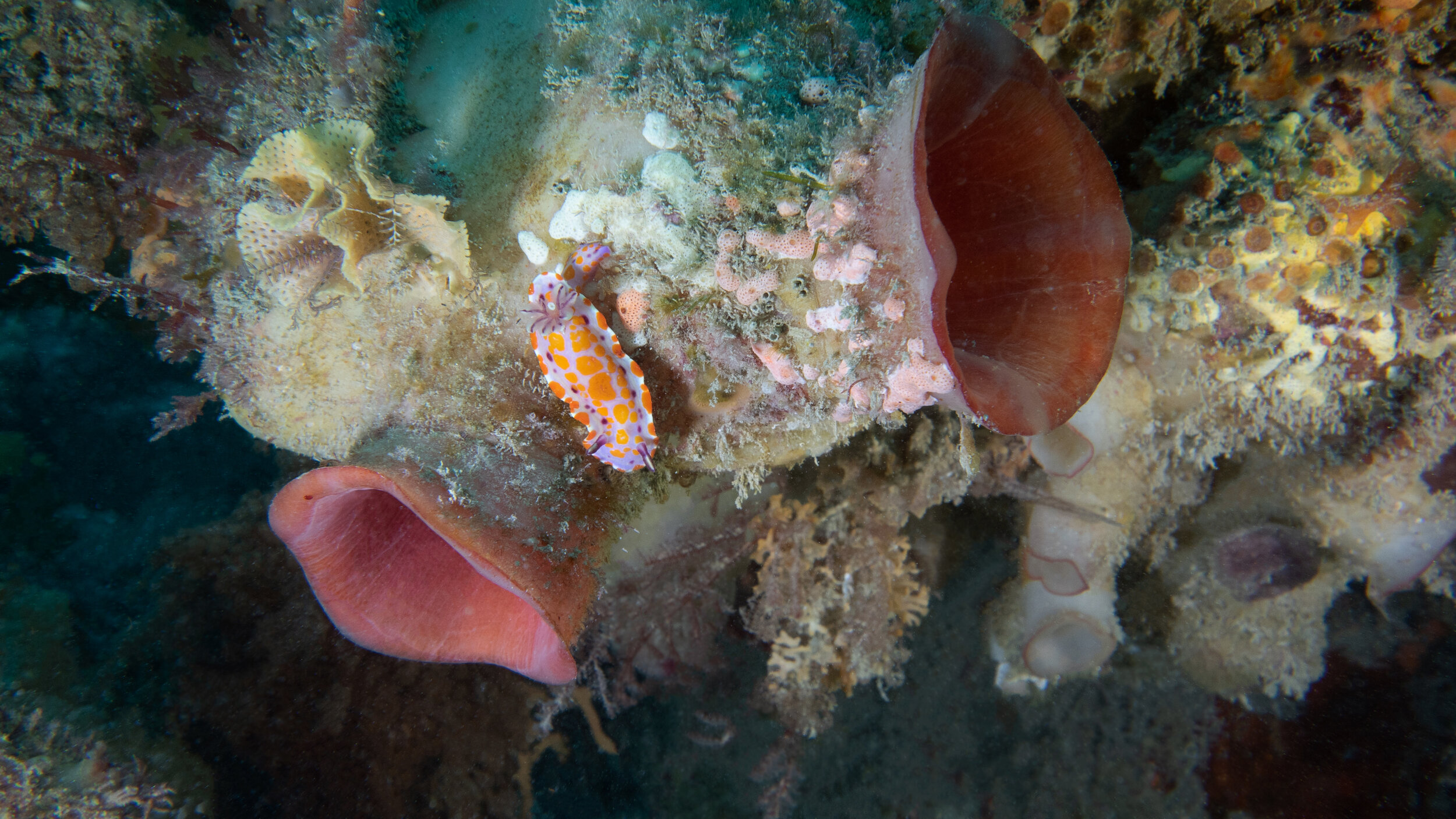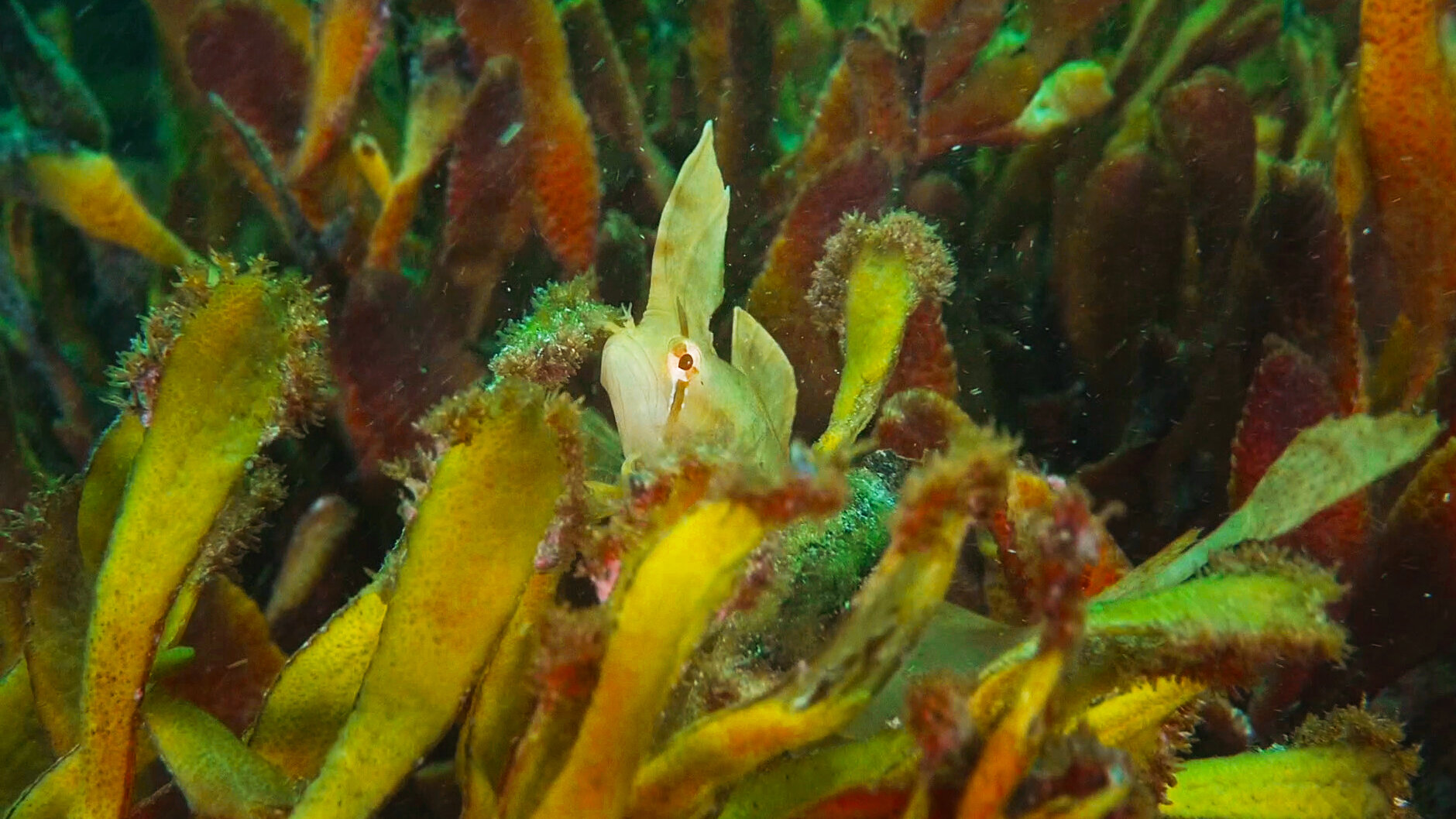Nudibranch
A divers delight
The nudibranch, or commonly called “nudi,” is one of the most beloved sea creatures to spot underwater. They are soft-bodied molluscs, which are highly varied in species in shape, size and especially colour. As if made as a subject of Mother Nature’s canvas, nudibranchs’ possess bright colour patterns and intricate designs that often delight divers. With around 2,000 identified species, nudibranchs are found all over the world including along the Great Southern Reef.
Naked gills
Their name is derived from the latin nudibranchia, which means literally “naked gills,” and describes the feather-like gills and horns often found on their head or clustered on their back. They greatly range in size, with small ones being measured around only a few millimetres.
You are what you eat
Similar to a snail feasting on above-water plants, nudibranch slowly grazes upon algae, sponges, corals, barnacles and even other nudibranchs. Their colour is derived from what they eat attributing to camouflage in the respective area. Once they have devoured their prey, they can even retain their foul-tasting poisons as a defense mechanism.
Strange sex lives
Known as a simultaneous hermaphrodite, nudibranchs have both male and female reproductive organs located on the right side of their body. Nudibranchs deposit their eggs in spiral, gelatinous formations, and in an effort to deter predators, the eggs contain toxins accumulated from sea sponges. Once the juveniles hatch, they normally resemble their parental counterparts and have a short lifespan that lasts sometimes less than a month and can live for up to one year.
Fast Facts:
Family: Opistobranchs (sea slugs)
Order: Nudibranchia
Feeding: Corals, sponges, algae, barnacles, and other nudibranchs
Habitat: Most commonly found along shallow reefs, but can also live in deep water as well
Distribution: Worldwide
Special Power: Absorbs their prey’s toxins and uses it in their own defense
Sea slug or nudibranch?
Often the term “nudibranch” is used for all sea slugs. However, while all nudibranchs are sea slugs, not all sea slugs are nudibranchs. The sea slug featured in the video below is the rarely seen Philinopsis troubridgensis. This species belongs to the "headshield slug" group.
The vast majority of headshield slugs still possess external shells, though generally they are unable to retreat into them fully, whereas others have reduced or internal shells. They all have well evolved headshield, which they use to dig under the sand. These slugs also have highly sensitive eyes on the anterior end of the head and bunched cilia around the mouth, which is used to track their prey's mucous trail.









